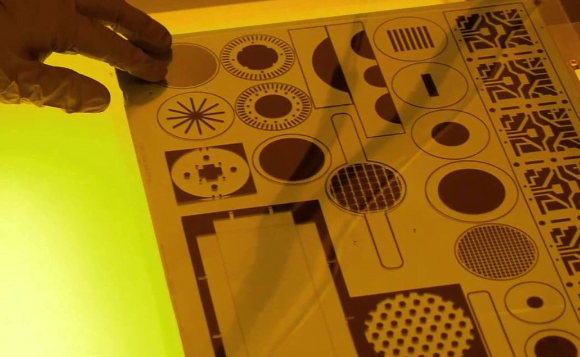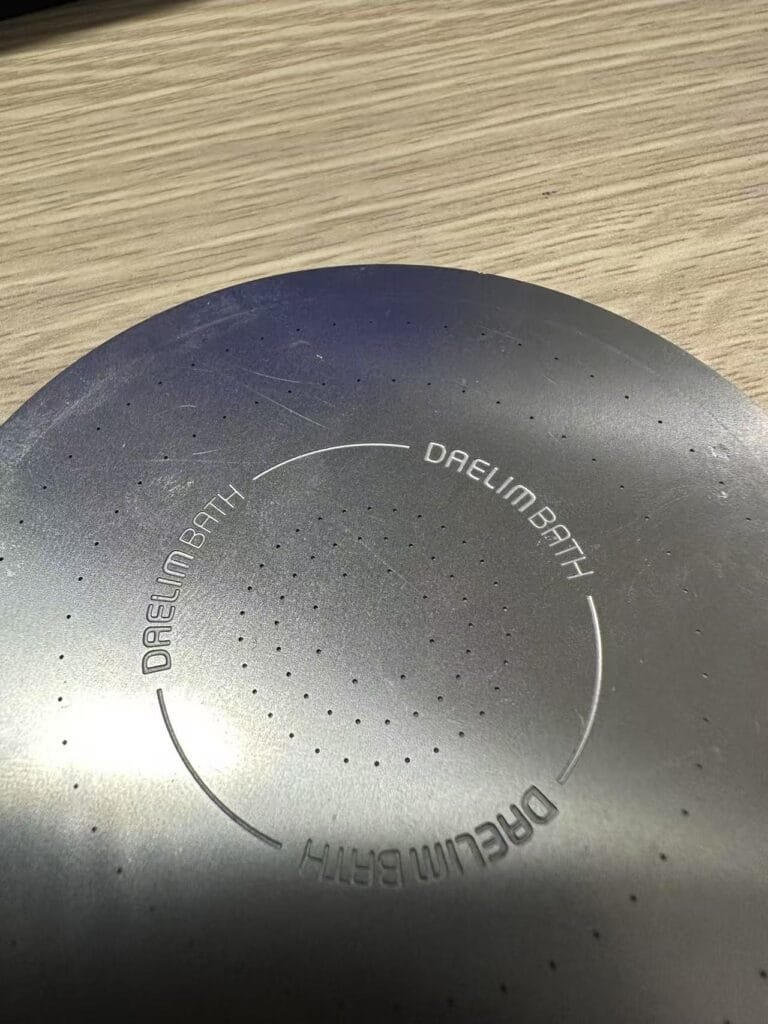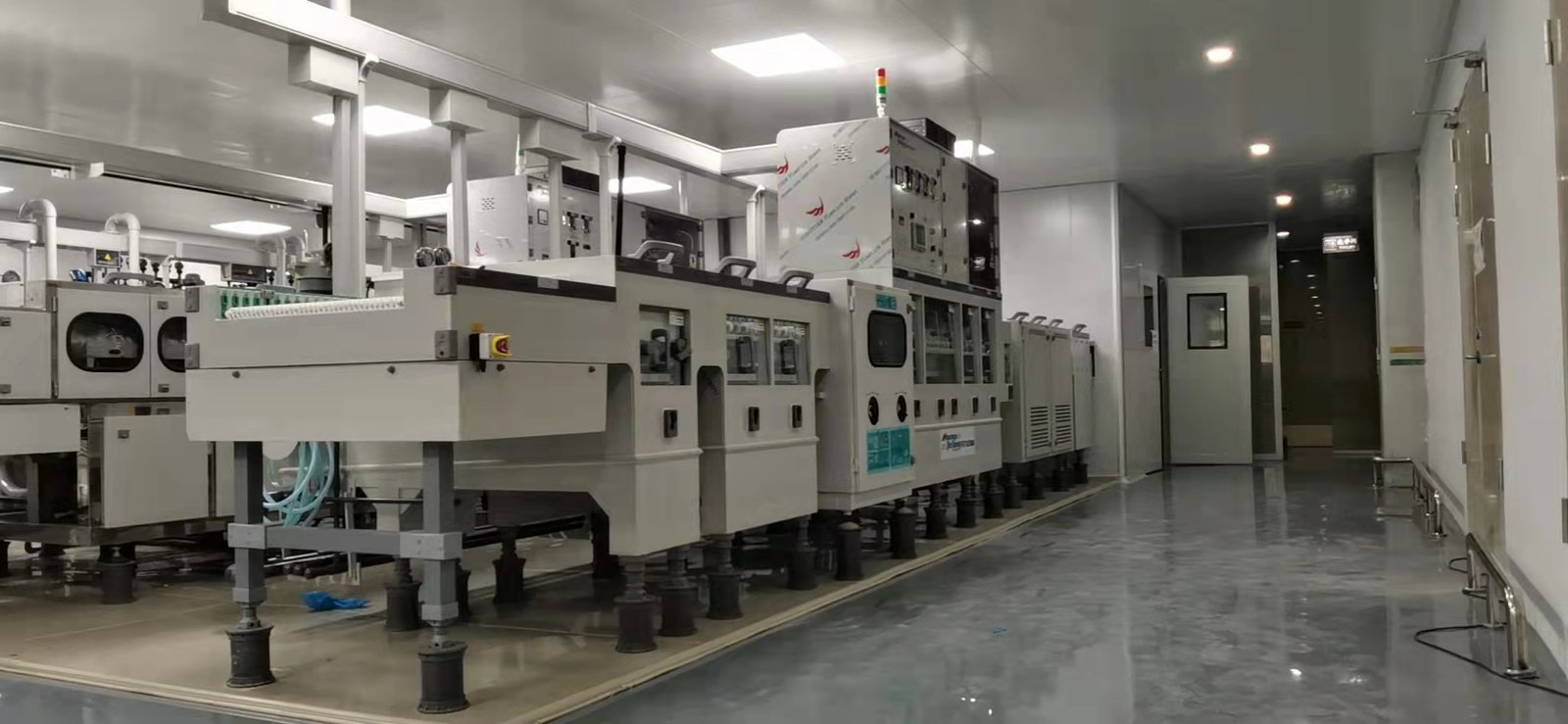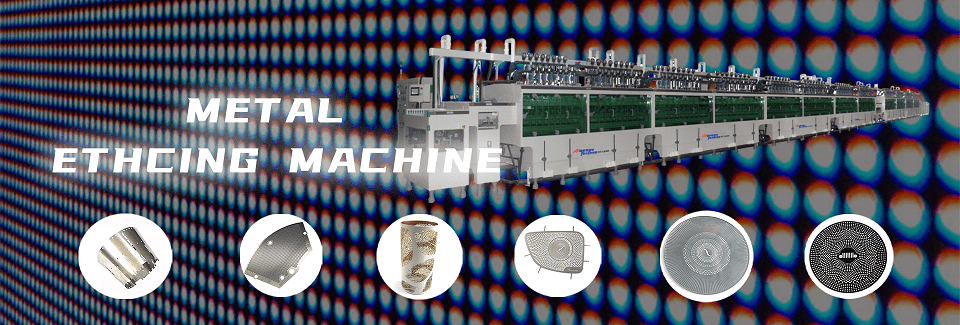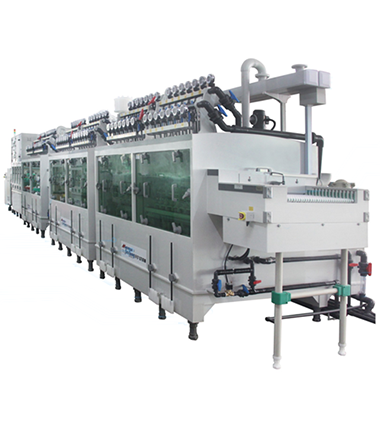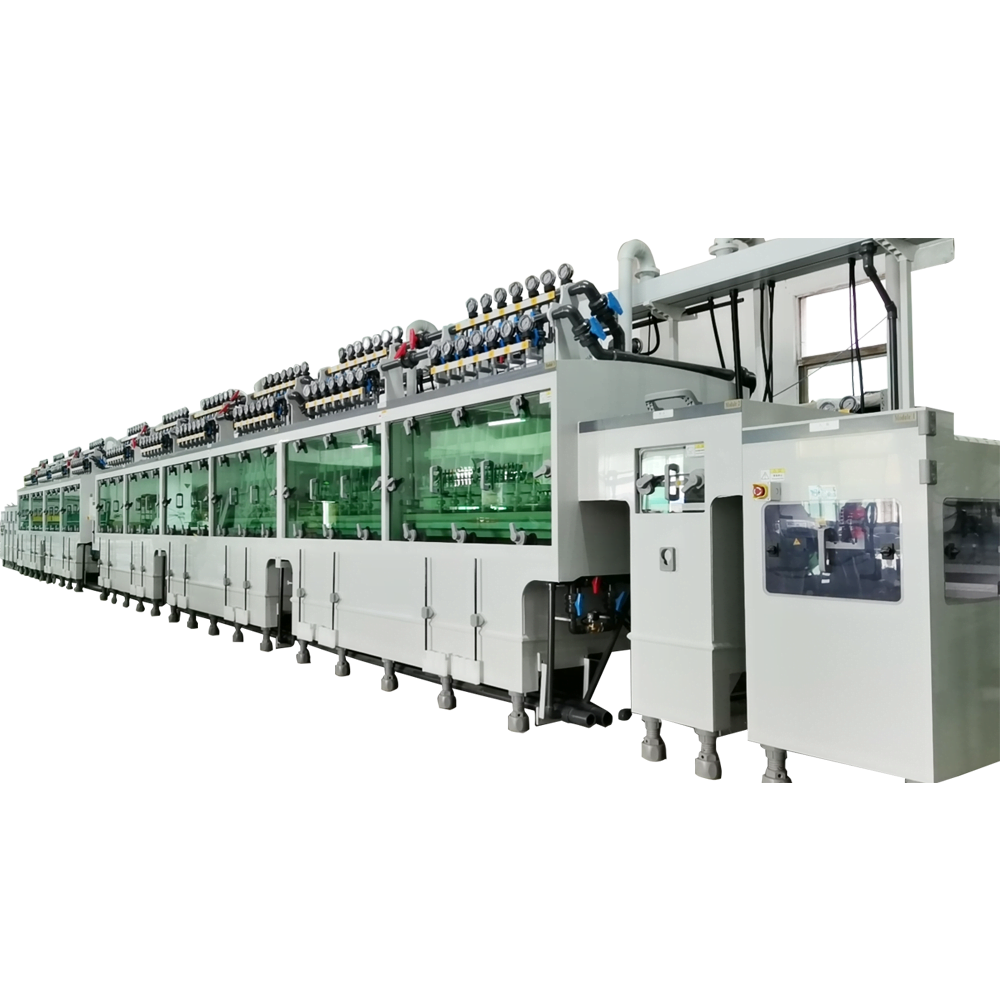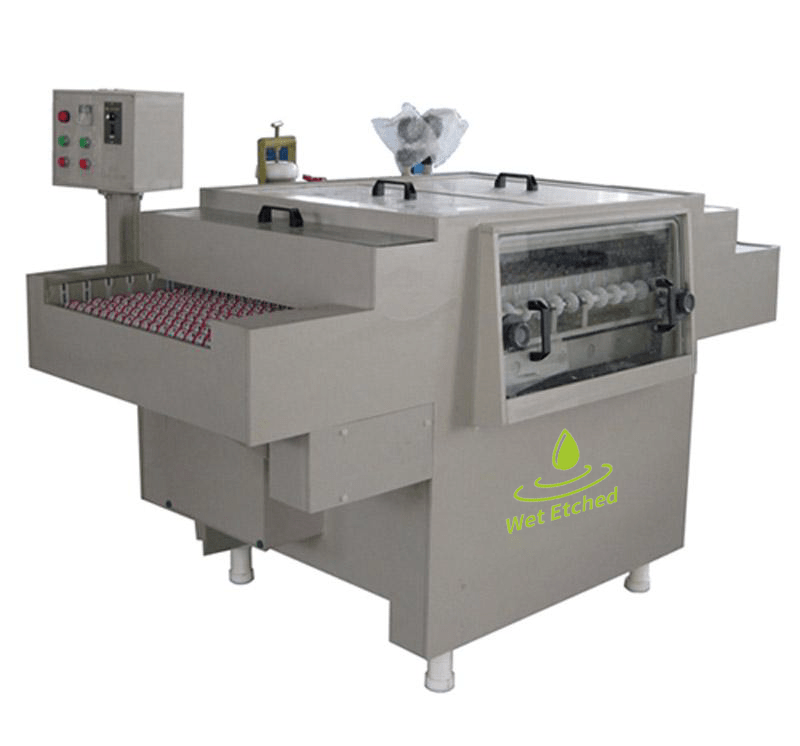Effective troubleshooting and regular maintenance are crucial for keeping wet chemical etching machines in top working condition. By understanding common issues, implementing preventive maintenance, and optimizing machine performance, operators can reduce downtime and ensure consistent, high-quality etching results. Investing in proactive maintenance strategies will help extend the lifespan of the equipment and enhance production efficiency.
Common Issues in Wet Etching Machines
One of the most frequent issues is inconsistent etching across the metal surface, which can result in uneven patterns and defects in the final product. This can be caused b
- Chemical Imbalance:
- Temperature Fluctuations: Etching efficiency can be heavily affected by temperature fluctuations. Maintaining a consistent temperature is critical for ensuring uniform results.
- Mechanical Issues: If there’s an issue with the agitation system or spray nozzles, the chemicals might not be evenly distributed, leading to inconsistent etching.
To fix this, start by checking the chemical levels and the temperature of the etching solution. You may need to replace or clean clogged nozzles or adjust the agitation system for better coverage.
1.2 Clogged Nozzles or Filters
Clogged nozzles or filters can severely impact the effectiveness of the etching process. When spray nozzles become blocked, the etching solution fails to reach the metal surface consistently, causing uneven etching.
To fix this issue, regularly inspect and clean the nozzles and filters. Use recommended solvents or cleaning solutions to clear any blockages. Additionally, check for any signs of corrosion or wear that could require replacing the components.
1.3 Chemical Imbalances
Chemical imbalance is a subtle but significant problem that can go unnoticed for some time, affecting both the quality and efficiency of the etching process. Over time, the chemical bath can lose its effectiveness, or the concentration of acids can become too strong or too weak.
Regular testing of the etching solution is necessary to ensure it’s within the optimal range. Implement a scheduled replacement or replenishment cycle for the chemicals to avoid this problem.
Preventive Maintenance for Etching Machines
Preventive maintenance is key to extending the lifespan of wet etching machines and ensuring that they continue to perform at their best. Here’s a guide to preventive maintenance practices for wet chemical etching machines:
2.1 Regular Cleaning
Cleaning the machine components is essential to prevent chemical buildup, blockages, and corrosion. Pay special attention to:
- Etching baths: Remove any residual etching solution and rinse with water.
- Nozzles and filters: Clean regularly to prevent clogs.
- Photoresist unit: Clean the unit to prevent residue buildup that can affect exposure quality.
- Spray heads: Ensure that spray heads are free of debris to provide even coverage.
2.2 Check Components for Wear and Tear
Regularly inspect critical components such as the agitation system, heating elements, and spray nozzles for wear and tear. Replace any parts that show signs of damage to avoid disruptions during the production process.
2.3 Monitor Chemical Balance
One of the simplest ways to keep the machine running smoothly is by monitoring and adjusting the chemical balance. Implement routine testing to ensure the etching solution is effective and replenishing it as needed.
How to Perform Basic Troubleshooting on Etching Machines
When issues arise with wet etching machines, it’s important to quickly diagnose the problem to minimize downtime. Here’s a basic troubleshooting guide to help you:
3.1 Inspect the Photoresist Unit
The photoresist unit is responsible for creating the resist patterns on the metal surface. If you’re seeing poor pattern definition or no etching at all, check the photoresist unit:
- Make sure the exposure time and light intensity are set correctly.
- Verify that the photoresist layer is uniform.
- Inspect the alignment of the photoresist exposure system to ensure accurate pattern transfer.
3.2 Check the Etching Bath
If you notice uneven etching or poor surface quality, it may be time to inspect the etching bath. Start by checking the chemical concentration and temperature. If they are within the recommended range, ensure the agitation system is functioning properly to ensure even distribution of chemicals.
3.3 Review the Filtration System
A clogged filtration system can cause residue buildup that affects the quality of etching. Check the filtration system for blockages and clean or replace the filters if necessary.
Optimizing the Performance of Your Wet Etching Machine
To maximize the performance of your wet etching machine and increase the overall efficiency of your production, consider the following strategies:
4.1 Adjust Process Parameters
Regularly evaluate your etching process parameters, such as temperature, chemical concentration, and exposure time. Fine-tuning these settings can lead to better results, higher precision, and reduced etching time.
4.2 Improve Chemical Handling
Proper chemical handling is crucial for consistent etching. Ensure that chemicals are stored correctly and monitored for degradation. Always use the correct chemicals for specific applications to prevent unwanted reactions or inefficiencies.
4.3 Upgrade Filtration Systems
Investing in a more efficient filtration system can enhance the performance of your etching machine. Look for systems that offer better filtration rates and lower maintenance requirements. Upgrading your filtration system can improve etching quality and reduce downtime due to clogged filters.
Handling Etching Equipment Failures and Downtime
Despite your best maintenance efforts, equipment failures and unexpected downtime can occur. Here’s how to minimize downtime and address failures promptly:
5.1 Quick Diagnostics
When an issue arises, it’s essential to perform a quick diagnostic check. Look for common indicators like irregular etching patterns, changes in chemical solution levels, or system alerts. By identifying the problem quickly, you can avoid unnecessary downtime and reduce the time needed to repair the machine.
5.2 Keep Spare Parts On Hand
Having essential spare parts readily available can dramatically reduce downtime in case of a failure. Stock critical components like nozzles, filters, agitation parts, and photoresist supplies to ensure quick repairs. Work with equipment suppliers to maintain a list of recommended spares.
5.3 Establish a Maintenance Schedule
Having a strict preventive maintenance schedule can help reduce the likelihood of unexpected failures. Make sure to schedule regular maintenance checks, machine calibrations, and chemical replacements to ensure the equipment is running smoothly.
It is not difficult to find a good equipment, but it is difficult to solve the problem if the equipment fails.
WETetched has many years of experience in etching and has rich experience in equipment failure.


